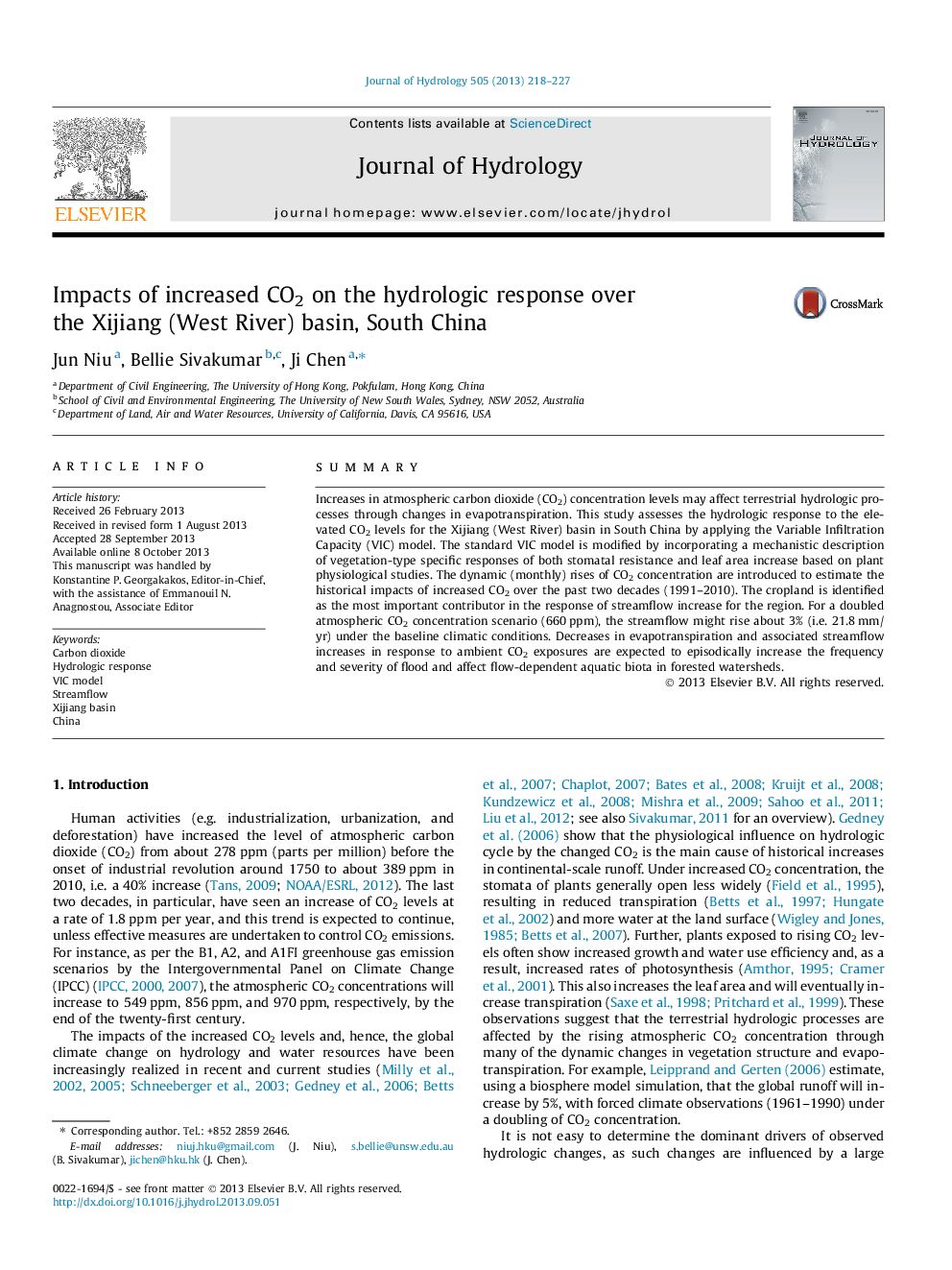| Article ID | Journal | Published Year | Pages | File Type |
|---|---|---|---|---|
| 4576162 | Journal of Hydrology | 2013 | 10 Pages |
SummaryIncreases in atmospheric carbon dioxide (CO2) concentration levels may affect terrestrial hydrologic processes through changes in evapotranspiration. This study assesses the hydrologic response to the elevated CO2 levels for the Xijiang (West River) basin in South China by applying the Variable Infiltration Capacity (VIC) model. The standard VIC model is modified by incorporating a mechanistic description of vegetation-type specific responses of both stomatal resistance and leaf area increase based on plant physiological studies. The dynamic (monthly) rises of CO2 concentration are introduced to estimate the historical impacts of increased CO2 over the past two decades (1991–2010). The cropland is identified as the most important contributor in the response of streamflow increase for the region. For a doubled atmospheric CO2 concentration scenario (660 ppm), the streamflow might rise about 3% (i.e. 21.8 mm/yr) under the baseline climatic conditions. Decreases in evapotranspiration and associated streamflow increases in response to ambient CO2 exposures are expected to episodically increase the frequency and severity of flood and affect flow-dependent aquatic biota in forested watersheds.
